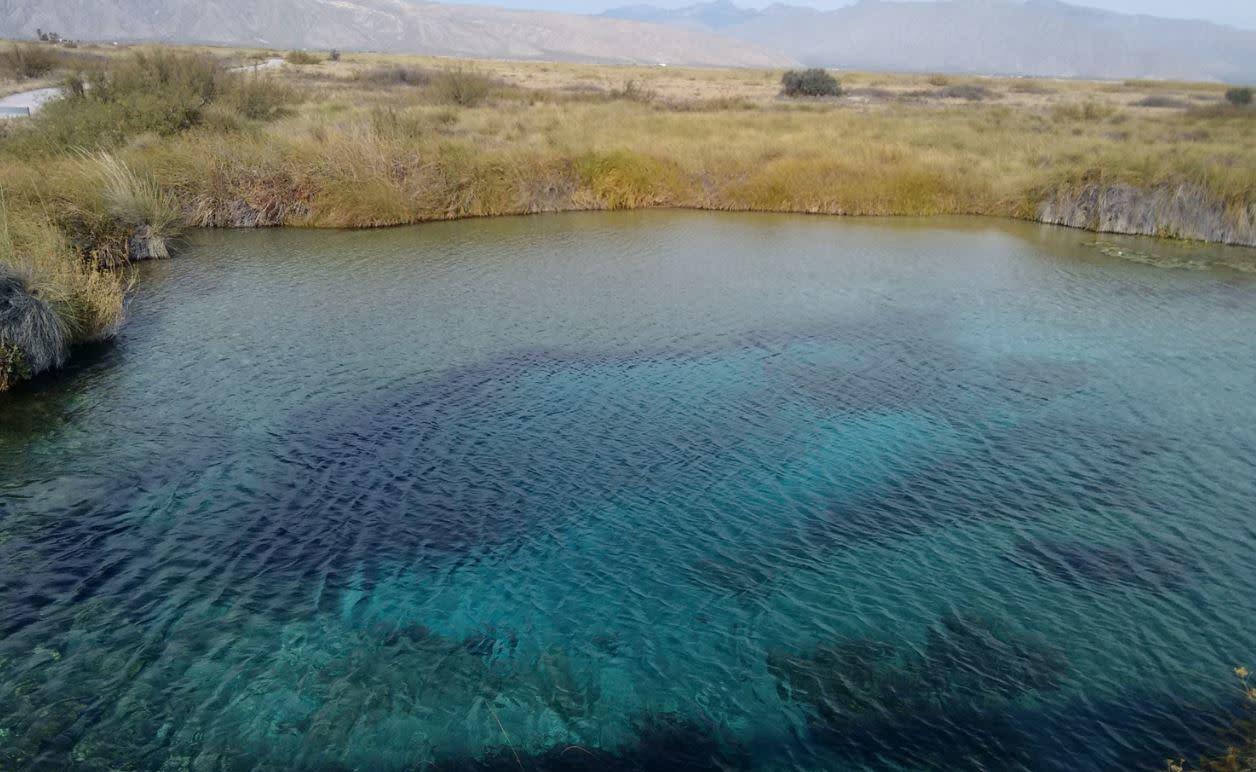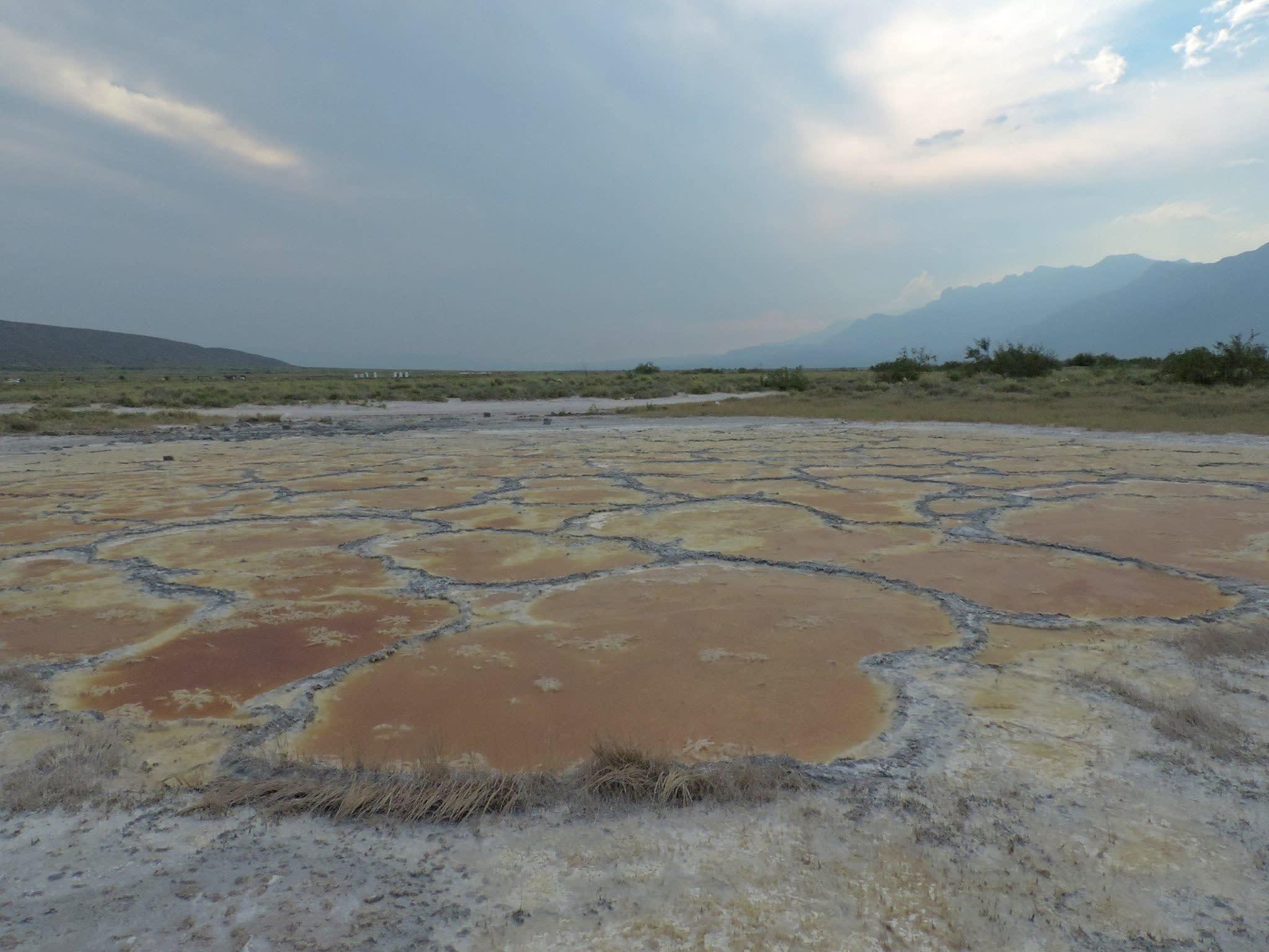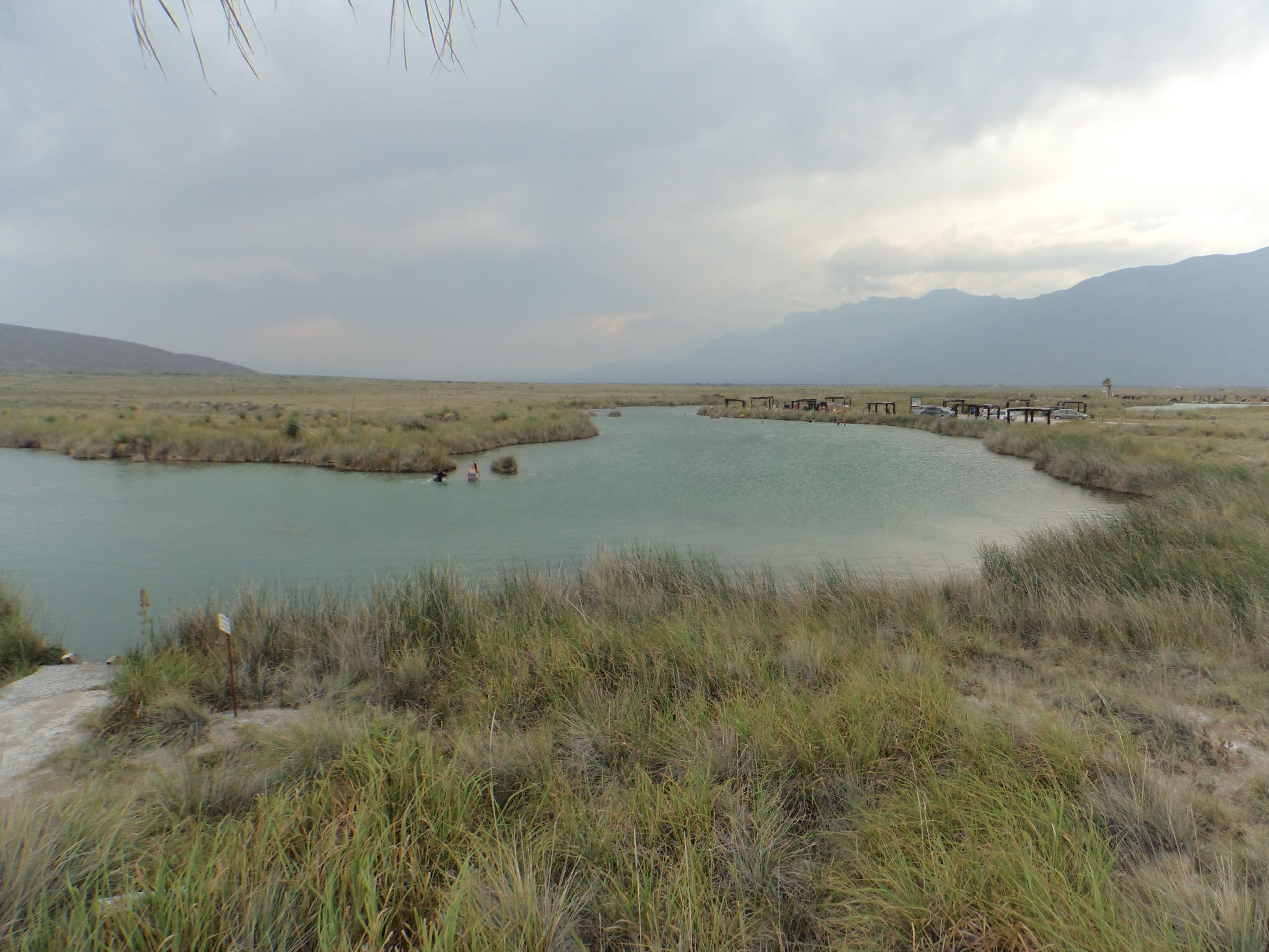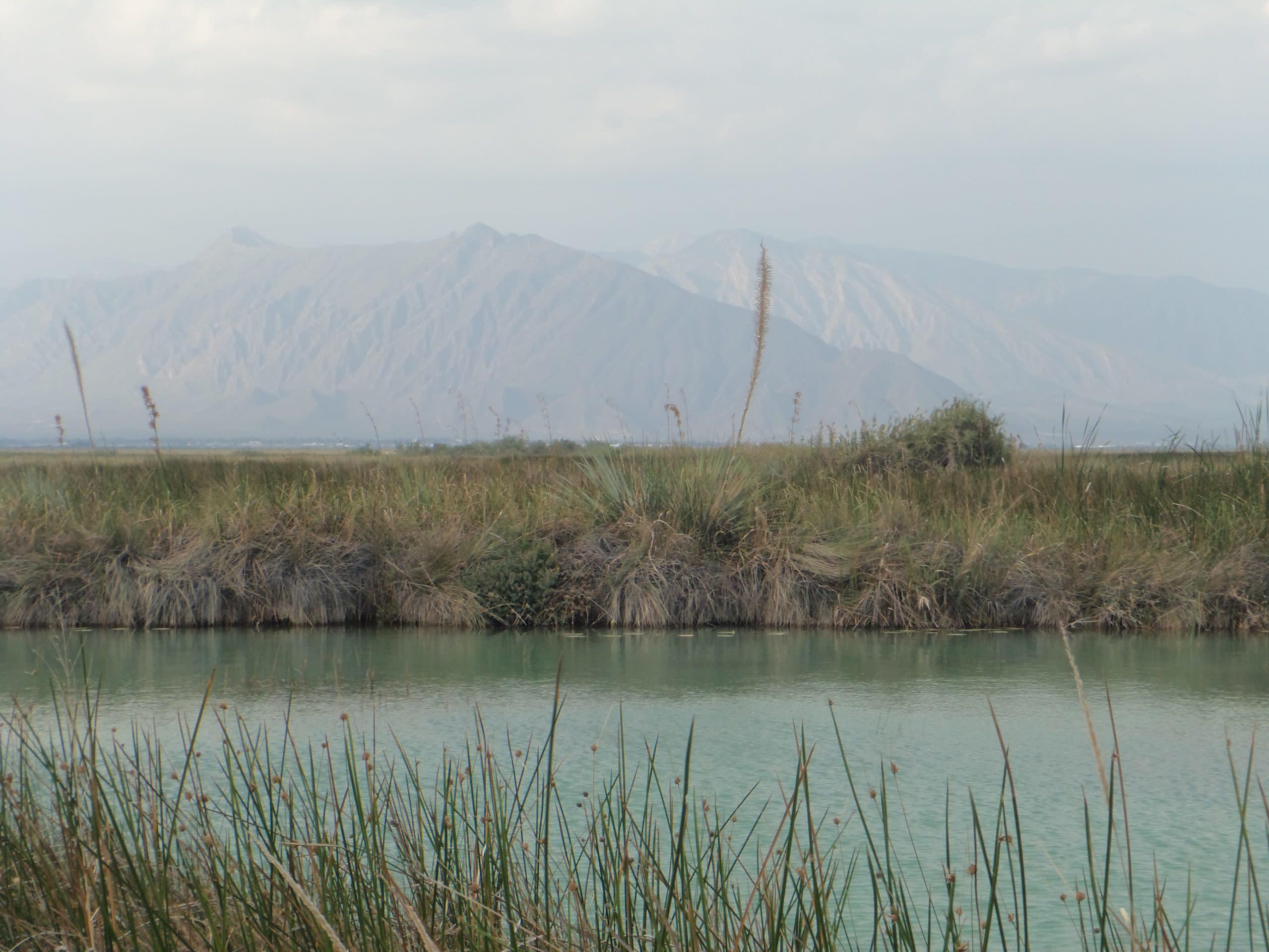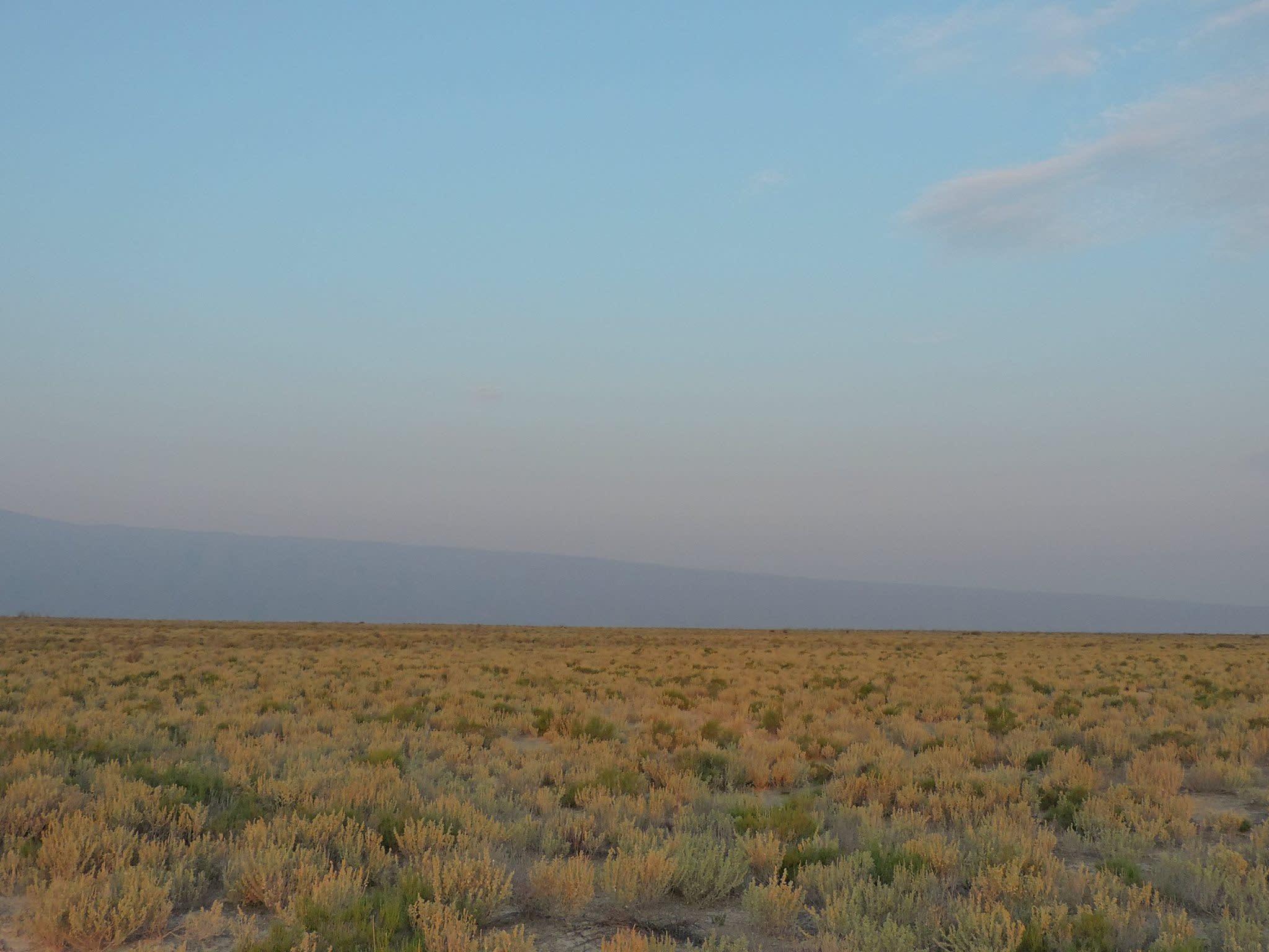
Cuatrociénegas
Categories
International
About
GENERAL INFORMATION
Criteria:
- Currently a Ramsar Site
- Listed on more than one “valuable wetland” list by natural resource agencies or nongovernment organizations.
- Protects biological diverse wetland flora, fauna and/or their habitat
- Supports significant numbers of wetland-dependent fauna, such as water birds or fish
- Rare or unique wetland type within its own biogeographical region.
The Cuatrociénegas wetlands complex, considered one of the most important wetlands in Mexico, is located in the deserts of Northern Mexico Highlands. Designated as a Ramsar Site in 2002, this ‘Protected Natural Area of Flora and Fauna’ occupies more than 840 Km2 of aquatic ecosystems represented by springs, permanent streams, and flooded areas where the water from the springs is concentrated, locally known as 'pools'. These blue pools mimic Precambrian ancient sea composition and harbor live stromatolites, a bacterial form of life that once dominated the oceans. A large number of endemic species inhabit Cuatrociénegas wetlands. Although fish have been the most studied, the wealth of invertebrates discovered has increased the list of endemism. The Cuatrociénegas valley region is determined as an oasis from the anthropological point of view. This region was important for several nomadic groups, so it is possible to find some artifacts such as arrowheads and spears. Cuatrociénegas is a unique ecosystem complex that harbors several endemic and endangered species, has a beautiful scenic landscape, and is a crucial source of water for people, agriculture, and wildlife.
Exemplary Ecosystem Services:
- Maintains ecological connectivity/cohesion
- Aesthetic/cultural heritage value/ provisioning
- Recreation (birdwatching, ecotourism)
- Aquifer recharge
- Water quality improvement
- Education
CONSERVATION STATUS AND THREATS
Public Access: Yes
Current and Future Threats: Some pools destroyed; drying, deforestation and modification of water bodies; irrigation channels construction; overgrazing and pasture burning for livestock; and mining industry pollution.
Conservation status: RAMSAR Designation
Adjacent Land Use: Upland Prairie/Meadow/Grassland
Approximate natural buffer width:
- > 100 ft
Additional resources:
https://www.ncbi.nlm.nih.gov/pmc/articles/PMC3426885/
https://www.nasa.gov/image-feature/cuatro-cienegas-basin-mexico/
ECOLOGY
Approximate size: 84,347 ha
General wetland characterization:
- Inland Fresh Meadow
- Inland Open Fresh Water
Adjacent Water Bod(ies):
- Pond
- Stream
Name of body of water: Oasis
Surficial Geology:
Medina-Chávez, N. O., De la Torre-Zavala, S., Arreola-Triana, A. E., & Souza, V. (2020). Cuatro Ciénegas as an Archaean Astrobiology Park. In Astrobiology and Cuatro Ciénegas Basin as an Analog of Early Earth (pp. 219-228). Springer, Cham.
Ochoterena, H., Flores-Olvera, H., Gómez-Hinostrosa, C., & Moore, M. J. (2020). Gypsum and plant species: a marvel of Cuatro Ciénegas and the Chihuahuan Desert. In Plant Diversity and Ecology in the Chihuahuan Desert (pp. 129-165). Springer, Cham. https://doi.org/10.1007/978-3-030-44963-6_9
Souza, V., Moreno-Letelier, A., Travisano, M., Alcaraz, L. D., Olmedo, G., & Eguiarte, L. E. (2018). The lost world of Cuatro Cienegas Basin, a relictual bacterial niche in a desert oasis. Elife, 7, e38278. https://doi.org/10.7554/eLife.38278.016
If Adjacent to Stream, stream order: Springs
Soils:
Cuatrociénegas region has a complex mosaic of soils with different gypsum contents, ranging from massive, ancient gypsum evaporite bedrock, crystalline selenite, and anhydrite to very recent formations of secondary evaporites, often mixed with other salts, and gypsum dunes. There is a very high ratio of nitrogen to phosphorus (167: 1) in the sediment of the Cuatrociénegas hydrological system and extremely unbalanced nutrient stoichiometry. In this extremely diverse wetland, the recycling of the deep aquifer by magmatic heat replicates the conditions of many ancient oceans.
FLORA AND FAUNA
Dominant flora: water lilies Nymphaea ampla; tular or reed beds Juncus torreyi, Phragmites australis, Scirpus americanus, Schoenoplectus maritimus paludosus, Typha domingensis; aquatic grasses Ruppia maritima, Spartina spartinae; Romerito Distichlis spicata.
Unique flora: Nymphaea ampla; 26 endemic plant species, 12 endangered
Dominant fauna: Molluscs with 5 genera and 9 endemic species, such as Assiminea sp., Coahuilix hubbsi, C. landyei, Cochliopina milleri, Drepanotrema sp., Durangonella coahuila, Ferrisia sp., Lymnaea sp., Mexipyrgus churinceanus, Mexistiobia manantiali, Mexitiobia manantiali, N. acarinatus, Orygoceras sp., Paludiscala caramba; from crustaceans Palaemonetes paludosus and Procambarus (Pennides) suttkusi; Fish, most endemic and all threatened, such as Astyanax mexicanus, Cichlasoma cyanogutattum, C. minckleyi, Cyprinodon atrorus, C. bifasciatus, Dionda episcopa, Etheostoma lugoi, Gambusia marshi, G. longispinis, Ictalurus lupus, Lepomis meupus, Lepomis meup, Mepiscan Notropis xanthicara, Poecilia mexicana, Pylodictis olivaris, Xiphophorus gordoni; Reptiles and amphibians such as the water snakes Nerodia erythrogaster and N. rhombifer, the frog Rana pipiens, the turtles Apalone spinifera, Pseudemys scripta, the lizard Scincella lateralis, the snake Thamnophis hammondi, Cnemidophorus scalaris augusti fuscofemora;
Rare fauna: Thamnophis hammondi, Anas clypeata, Anthus spinoletta
ADDITIONAL INFORMATION:
The Lost World of Cuatrocienegas
Ficha Informativa de los Humedales de Ramsar
CONTACT INFORMATION
Applicant First Name: Tatiana
Applicant Last Name: Lobato de Magalhães
Applicant E-mail Address: tatilobato@gmail.com
Images

